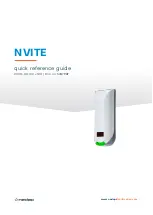
7-34
|
ni.com
Chapter 7
Counters
Example Application That Prevents Duplicate Count
With duplicate count prevention enabled, the counter synchronizes both the Source and Gate
signals to the 80 MHz Timebase. By synchronizing to the timebase, the counter detects edges on
the Gate even if the Source does not pulse. This enables the correct current count to be stored in
the buffer even if no Source edges occur between Gate signals, as shown in Figure 7-34.
Figure 7-34.
Duplicate Count Prevention Example
Even if the Source pulses are long, the counter increments only once for each Source pulse.
Normally, the counter value and Counter
n
Internal Output signals change synchronously to the
Source signal. With duplicate count prevention, the counter value and Counter
n
Internal Output
signals change synchronously to the 80 MHz Timebase.
Note that duplicate count prevention should only be used if the frequency of the Source signal
is 20 MHz or less.
When To Use Duplicate Count Prevention
You should use duplicate count prevention if the following conditions are true:
•
You are making a counter measurement.
•
You are using an external signal (such as PFI
x
) as the counter Source.
•
The frequency of the external source is 20 MHz or less.
•
You can have the counter value and output to change synchronously with the 80 MHz
Timebase.
In all other cases, you should
not
use duplicate count prevention.
0
7
7
6
7
0
1
Co
u
nter detect
s
ri
s
ing G
a
te edge.
Co
u
nter v
a
l
u
e
increment
s
only
one time for e
a
ch
S
o
u
rce p
u
l
s
e.
S
o
u
rce
8
0 MHz Time
bas
e
G
a
te
B
u
ffer
Co
u
nter V
a
l
u
e
Summary of Contents for PXI-6289
Page 1: ...PXI 6289...
















































